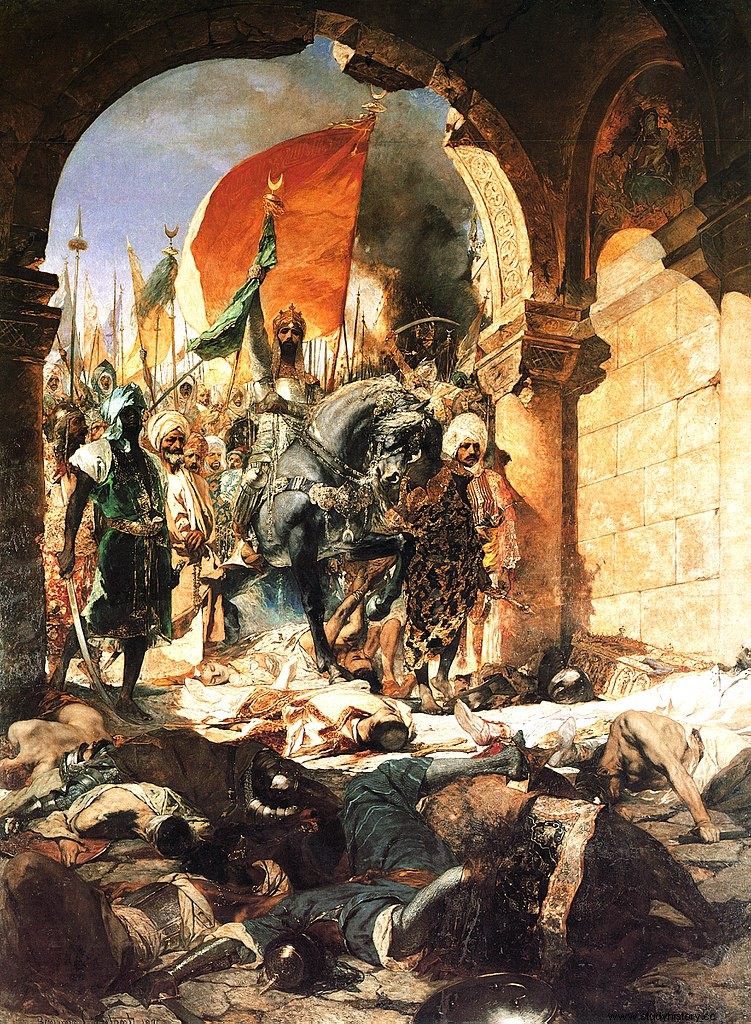- The once flourishing city of Constantinople has been in decline since the Crusaders plundered it in 1204 and the establishment of the Eastern Roman Empire (or Byzantine Empire). In 1453, it was greatly depopulated, and lost all its splendor with the reduction of trade.
- At the same time, the Ottoman Empire has accumulated conquests since the beginning of the 14th century and has already cut off the land routes between Constantinople and Western Europe:the city is gradually surrounded.
- In the 15th th century, Constantinople, desperate, even proposes the end of the schism for the help of the Roman Church in the war; the refusal seems to be a punishment from Rome for the schism consummated four hundred years earlier.
May 29, 1453

Characters
Mehmed II
Constantine XI
Procedure
Halfway through the 15th th century, the Ottoman sultan Mehmet II needed a great victory to establish his reign, and in 1453 he headed for Constantinople with his army of more than 100,000 men. In the city, the Emperor Constantine XI was unable to obtain reinforcements from the Genoese and Venetian counters:the city therefore had only 7,000 soldiers.
After two months of siege, the sultan entered the city on May 29, 1453. Constantine IX died in the fighting and most of the population was reduced to slavery. Mehmet II, who wants to make the city his capital, does not let the looting last long.
Consequences
- Constantinople becomes Istanbul, the new capital of the Ottoman Empire, but its population will long remain predominantly Christian.
- The capture of Constantinople by the Turks sent many Greek scholars into exile:they brought back forgotten knowledge to Europe, contributing to the beginnings of the Renaissance.
- Soon, the Ottoman Empire spread its control over the Mediterranean and built itself into a great power.
